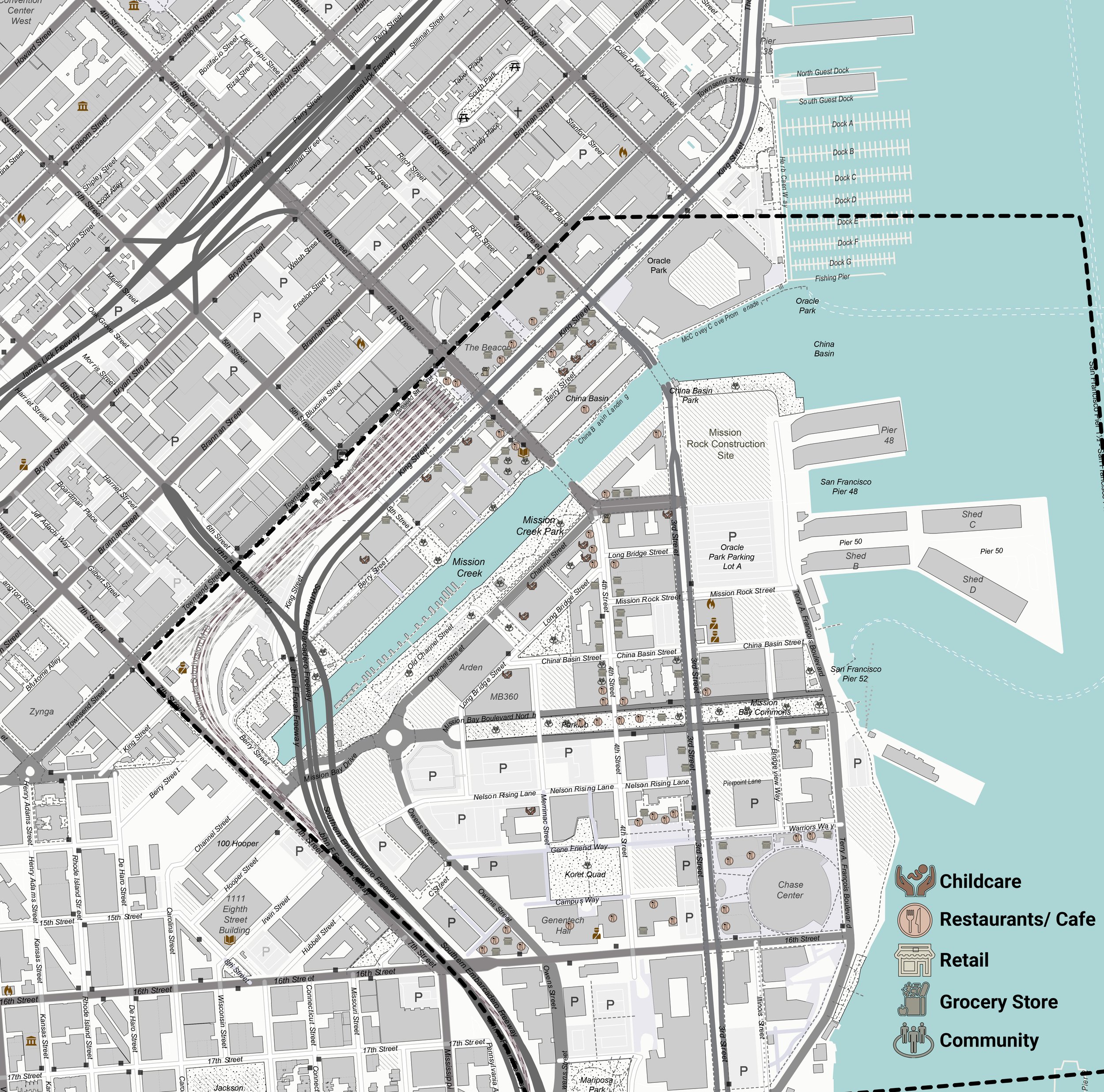by Daniel Ramirez, M.Arch 2021
Currently, the Mission Bay neighborhood has the ambition of addressing the urgent issue of subsidence. The buildings themselves are safe and supported, but the sidewalks/streets are not. The sidewalks are separating from the buildings at a rapid rate, and this will worsen as the sea level rises. Consequently, this will compromise the sidewalks as public space, storefronts, and most importantly the wellbeing of those low-income families that depend on the public good.
Generally, these disaster events/disaster conditions allow the private sector, venture capitalists, and speculative developers to exacerbate the original conditions by exploiting underprivileged people through the form of austerity, privatization, and policing. What if architectural opportunities could be developed that would allow a change in that balance, an opportunity for capitalism to invest in community building? This project explores the co-opting of the lost sidewalk and the storefront due to the sinking sidewalks. Funded by the capitalist model, it suggests an alternative situation in which the community can engage with this new circulation layer. This work can contribute to the necessary dismantling of the ongoing exploitation of the urban context.
“Through Architecture there is a possibility of turning the tables and allowing the low-income community (bottom-up) to take advantage of the private sector (top-down) by partially taking over the structure and allocating new community engagement spaces.”
These series of events and structural conditions begin to catalyze opportunities to not merely preserve the steward public access but also preserve the steward public space through the elevated infrastructural system. Community accountability is enabled during the process of merging what comes from the top-down (Capitalism) with the bottom-up (Community). Therefore, this proposal can contribute to the necessary dismantling of the ongoing exploitation of the urban context.

















